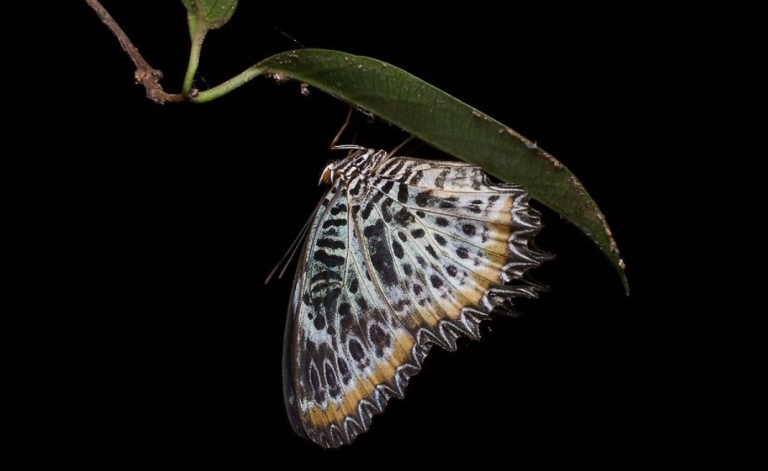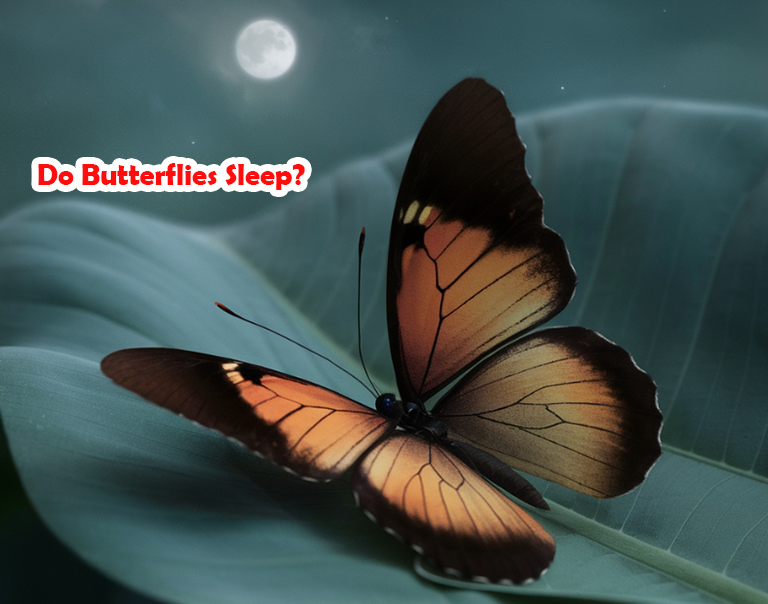Do Butterflies Sleep?
Have you ever wondered why we don’t see butterflies at night?
Do butterflies sleep with their eyes closed in a comfortable corner as we retreat to our bed after a long day? Is sleep necessary for them in the first place?
Without further ado, let’s dive into the mystery and discover the tiniest changes in a butterfly’s body!
What you will learn after reading this article:
- The necessity of sleep in butterflies.
- How, where & when butterflies sleep.
- How to identify a sleeping butterfly.
Definition of Sleep
How do you define “sleeping”?
In a way, sleeping means being inactive with a lowered metabolism. This metabolic state is highly sensitive to temperature, hence we often feel cold when we lie down in bed and get ready to sleep.
Humans and mammals go through physiological changes when they “sleep” with the most prominent happening in the brain.
It is difficult to study these changes in insects because of their simple and small brains, but becoming less responsive with relaxed muscles might be an acceptable sign.
Do Butterflies Sleep?
According to the first definition above, butterflies certainly do sleep at night.
Every activity necessary for their life requires heat, a rare resource when darkness falls. They can’t find food because flowers are replenishing their nectar. They can’t mate either when they can’t detect a mate.
In short, they have no reason to stay up.
Observing their bodies, we can spot significant changes such as drooping antennae, tucked-in legs, or folded wings.
When winter comes, the weather will be too severe for the butterflies to maintain their routines, so they attempt overwintering. It has the same essence as hibernation – a more extreme variation of the common sleep.
It is reported that if you disturb an asleep butterfly, they can still flee even though they might be slower compared to their usual speed.
Often confused with “sleep” is “diapause”. Diapause only occurs in winter, wherein butterflies and moths simply wait out the conditions not compatible with their survival.
Nevertheless, if we consider the second definition of sleep, then it is not something butterflies do. Resting with folded wings and open eyes seems more like a quiescent and dormant state than an actual slumber.

Love butterflies, check now: Butterfly sandals & Butterfly rugs
Sleep In Butterflies Is Necessary
Not so different from humans, butterflies need to get some rest to recharge the energy they spend on flying and eating. They can be deprived of sleep and become less active too. And, the next time they find a good place to rest, they will also sleep there.
Butterflies are cold-blooded, which means they cannot be active without sufficient warmth. Sleeping helps them get through the coldest time of the day and refill their “batteries” for another active session in the daytime.
The duration of sleep varies across different species and habitats. For example, a place with changes in lighting will not be ideal for a butterfly to sleep undisturbed.
A butterfly can sleep for a few hours in normal weather conditions and for months in hibernation.
Scientists also note that they might not need so much time to recover, yet nighttime doesn’t give them what they need to continue, hence they kind of just wait for the lighting and temperature to change.
How Butterflies “Sleep”
A resting butterfly looks like a bat due to its habit of clinging onto a certain spot and hanging themselves upside down. Unlike us, they don’t need to exert too much energy to keep in this position, hence they can relax this way.
They Sleep With Their Eyes Open
When you zoom in close enough, you will find butterflies sleeping with their eyes open. They don’t have a choice because their eyes have no lids.
It means they can receive the light you direct at them, yet their reaction is so much slower than when they are awake.
They Often Sleep Under Leaves
And they have good reasons to do so!
Firstly, it is usually humid and rainy at night, which might be harmful for butterflies. Secondly, asleep butterflies are easy prey for predators. Hiding under the leaves can solve both problems for them.
Researchers have recorded an interesting habit of butterflies with bright colors. They don’t exactly hide beneath a leaf while they sleep. Sometimes a twig will suffice. It is because their colors might serve as a warning sign that they are poisonous and not edible to the enemies.
Not All Butterflies Sleep At Night
When the day is cloudy or cool, butterflies might enter their quiescent state, even if the sun is still out. A good example is winter.
Categorized as the same type of insects as butterflies, moths are an exception we can discuss. They are the opposite of butterflies regarding habits, as they sleep during the day and become more active at night.
This daytime sleep in moths is known as “torpor”. Unlike hibernation, torpor is not dependent on weather and temperature, though unpredicted condition changes surely affect the moths.
Check more: How Many Wings Does A Butterfly Have?
How To Know If A Butterfly Is Sleeping
If you are not a researcher (amateur or professional) with enough effort to track a butterfly throughout the day, there is no way you can observe a butterfly sleeping.
The most obvious sign you can detect is their disappearance from your sight.
However, with suitable equipment and enough effort, you can spot butterflies hiding in almost undetectable spots and using their wings as camouflage for a peaceful and safe sleep.
During their resting time, butterflies will remain in the same spot and keep their activeness at the lowest level. A butterfly can fold or close its wings, or even leave them open, depending on the spot it chooses.
Compared to when they are awake, butterflies react more slowly and relax their muscles while they rest. You can easily capture these changes with the right camera.
Conclusion
Butterflies sleep for the same reason we need sleep. They burn out a lot of energy compared to their tiny bodies during the day, and the lowered temperature at night doesn’t allow them to be as active.
When you see a butterfly dangling from a twig with its wings closed, it is very likely to be asleep. It is best to leave the little charmer alone, as it can still be stirred from its rest if you come close!
If you have any questions or stories about the sleeping habits of butterflies to share, feel free to do so anytime!

